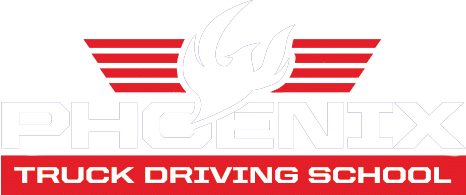Truck drivers are responsible for transporting goods and materials throughout the nation and these individuals keep our economy functioning. Roughly 72.2% of freight in the United States travels by semi-truck according to data from the American Trucking Associations (ATA). Having a basic overview of the freight transportation process can help truckers be more effective and understand the key role they play.
What Is Freight?
To understand how freight works, you first need to know what it is. Freight includes anything that is transported via land, sea, or air in a large quantity for a commercial purpose. This distinguishes the term from “shipping,” which includes smaller amounts of goods and can involve non-commercial shipments.
Who Is Involved?
There are various groups and individuals that are involved in freight logistics.
These include:
Shipper
This is the person or company that needs to ship the cargo. They are also sometimes called the consignor.
Receiver
The shipper sends freight to the receiver, also known as the consignee.
Carrier
The carrier is responsible for getting the shipment from the shipper to the receiver. Various individuals working with the carrier are responsible for different aspects of the process, from organizing the transportation to completing the actual driving.
Third-Party Logistics Providers (3PLs)
Many shippers outsource logistics management to third-party logistics providers (3PLs), which handle warehousing, paperwork, distribution, and other necessary tasks.
What Are Truckers Responsible For?
Each party involved in the logistics process has key responsibilities.
For truckers, these include:
- Knowing and following Federal Motor Carrier Safety Administration (FMCSA) rules and regulations
- Ensuring the cargo is properly secured
- Driving safely
- Making sure the truck is in good working condition
- Keeping necessary paperwork accessible in the truck in case this is requested
This is just a basic overview of the requirements for truckers, not an exhaustive list.
Types Of Truck Freight Shipments
Trucks can transport freight in a variety of ways:
Full Truckload (FTL or TL)
Like the name implies, a full truckload shipment, also known as FTL or TL, fills an entire trailer with freight for one shipper.
Less Than Truckload (LTL)
Less-than-truckload (LTL) transportation combines freight from multiple shippers. Each shipment takes up only a portion of the trailer’s space. LTL freight uses a hub and spoke model and shipments travel to terminals where they are sorted and sent back out to new terminals until they reach their destination.
Intermodal (ITML)
Intermodal shipping uses the same container to transport freight using multiple modes of transportation. For example, a ship might arrive with cargo that a truck then picks up and takes to its final destination without opening the container.
Multimodal (ML)
Multimodal shipments use more than one mode of transportation. This is different from intermodal transportation because the container is opened and the cargo is transferred.
How To Become A Trucker
If you’re interested in getting involved in freight transport as a truck driver, Phoenix Truck Driving School can help you get started. Our students can earn their commercial driver’s license (CDL) in as little as four weeks and we have schools in Arizona, New Mexico, and Texas.



